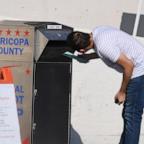In need of cash? Check Savings Bonds
— -- Times are tough, and a lot of us are short on cash. Selling unwanted holiday gifts on eBay might raise a few bucks, although you probably won't attract a lot of bids for that beef-scented body spray you got from your manly cousin. You could shake out the sofa cushions, but that probably won't produce much of a profit, unless you had Warren Buffett at your last Tupperware party.
But there are other potential sources of cash that are probably more lucrative than the sofa. Some examples:
•Savings Bonds that are no longer earning interest. The Bureau of the Public Debt, a division of Treasury, says there are more than 40 million matured Series E Savings Bonds languishing in sock drawers and safe-deposit boxes.
The bonds were purchased from 1941 through 1978 and have an estimated total value of $16 billion, Treasury says. Some of these unredeemed bonds have probably been destroyed, and others may belong to people who have died.
In other cases, investors may be holding on to matured bonds because they don't want to pay taxes on the interest, says Stephen Meyerhardt, spokesman for the Bureau of the Public Debt. But, Meyerhardt notes, "Even after paying the tax, you're still going to be ahead of the game."
Most financial institutions will cash in Savings Bonds, Meyerhardt says. If you're the beneficiary and the original owner is deceased, you'll need to show the financial institution a death certificate, he says.
Treasury offers a Savings Bond calculator at www.treasurydirect.gov that will help you figure out how much your bonds are worth. Another tool on the website, Treasury Hunt, will help you track down bonds you've misplaced. However, this tool is limited to bonds issued in 1974 or later.
To track down older Savings Bonds, send a written request to the Bureau of the Public Debt, P.O. Box 7012, Parkersburg, W.Va., 26106-7012. Include as much information about the missing bond as possible, such as the name (or names) of the owner, the owner's address and the date the bond was issued. If you're not sure, provide a range of dates.




